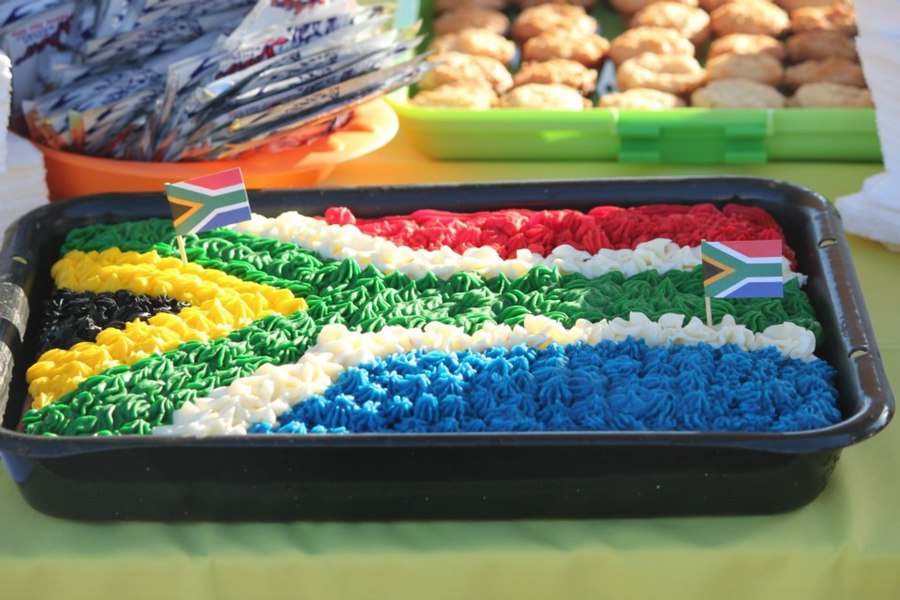South Africa is a country that is characterized mainly by its great cultural wealth. And as a result of ethnic influences (such as the Khoisan, the Xhosa or the Sotho), European (mostly British, the fruit
South Africa is a country that is characterized mainly by its great cultural wealth. And as a result of ethnic influences (such as the Khoisan, the Xhosa or the Sotho), European (mostly British, the fruit of the colonial era) and of slaves and servants who arrived from Asia, South Africa’s cuisine is colorful and completely irresistible, although unknown. for most visitors.
1. Boerewors
These are the most typical sausages of South African cuisine and are usually made with minced beef, sometimes mixed with pork and/or lamb, and seasoned with coriander, black pepper, and cloves or nutmeg. Stuffed in its own casing and preserved thanks to salt and vinegar, it is usually presented in a spiral shape and accompanied by pap, a traditional porridge described below.
2. Poetoepap or Pap
As mentioned, these are the porridge that is usually served as an accompaniment to both Boerewors and other dishes typical of South African cuisine. The potatoes’ pasta is made from white corn and meat, although sometimes meat is dispensed with and only white corn is chosen. In fact, it is the staple food for different tribes or South Africans without many economic resources.
3. Bobotie
Bobotie is another of the most typical dishes of South African cuisine, originated during the seventeenth century in areas of the Cape of Good Hope. It is a kind of meatloaf made with minced lamb and pork, although today beef is also used. Scrambled with eggs, the meat is seasoned to taste with ginger, lemon, various herbs, or even curry or chopped onions. Once baked, it is traditionally served with dried fruit, banana, or yellow rice; a sweet and salty mixture that will not leave you indifferent.
4. Sosaties
The term derives from sate (meat skewers) and saus (sauce), so it is easy to deduce what this traditional dish of South African cuisine consists of, specifically the Cape’s Malay cuisine. These are meat skewers, usually lamb, marinated in fried onions, chili peppers, garlic, tamarind juice, and curry leaves. Later roasted on the grill or the grill, and presented with mushrooms, onions, or peppers interspersed between the meat pieces, they make up an exquisite contrast of sweet and spicy flavors.
5. Braai
This is a term in the African language that refers to barbecue or barbecue, a practice not only associated with the most typical South African gastronomy but also with the country’s social customs; and it is understood as a way to create community, especially on Heritage Day (September 24). As you can imagine, meat is the star element of this event, which is why they include Boerewors, Sosaties, or Kebabs.
6. Frikadelle
Among the typical dishes of South Africa, we can also find the Frikadelle, a South African version of the meatballs we all know. They are generally made with beef, lamb, or fish, mixed with egg and different herbs that greatly enhance their flavor. They can be served both hot and warm, and although there is no significant difference with the meatballs we are used to, you should try them on your visit to the country.
7. Potjiekos
This South African stew is one of the most authentic dishes of typical South African food. Cooked in a characteristic outdoor iron pot, it includes vegetables such as cauliflower, pumpkin, cabbage, or carrot combined with meat to taste or potatoes. Whatever the ingredients, they will be simmered until they reach the right point and seasoned with different spices.
8. Bunny Chow
It is the most usual fast-food sandwich of typical South African food. It consists of bread stuffed with rabbit meat stewed in sauce and seasoned with different spices. It is a healthy option that can easily be found anywhere in the main cities of South Africa.
Have you ever been to South Africa and tasted another delicious dish? We want to hear from you! Remember to share your experience in the comments below.

